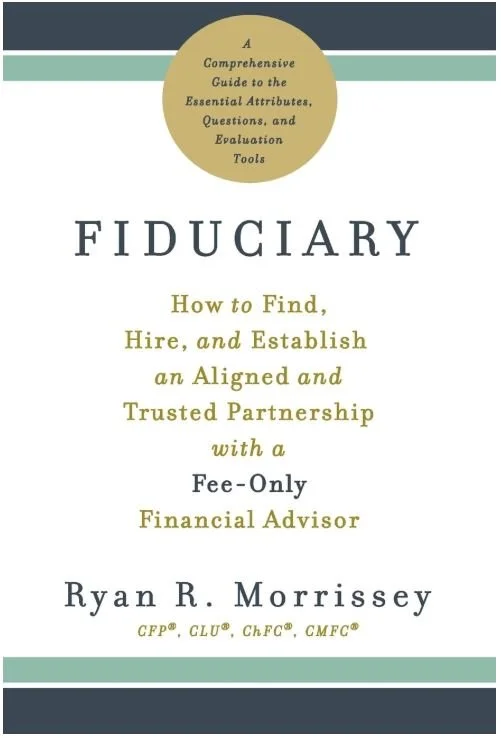3 Ways to Get a Do-Over on Social Security
Today, I'm going to answer a listener question about Social Security and how it works when you decide to stop collecting your benefits or go back to work.
Karen wrote in to ask about her situation: On the advice of a friend, she began collecting Social Security at age 62. It’s been about a year, and now she’s considering going back to work. Karen wants to know if she can stop her benefits and what her options are moving forward.
In this post, I’m going to cover three potential options that might allow you to “redo” your Social Security decision, so you have more flexibility in your retirement strategy. Let’s dive in!
Option 1: The 12-Month Do-Over
First up is the 12-month do-over. Social Security allows you to reverse your benefits within 12 months of starting them. This means that if you've been collecting Social Security for less than a year, you can actually pay back all the benefits you’ve received and restart your Social Security benefits as though you had never claimed them in the first place.
This is a one-time opportunity. To do this, you’ll need to fill out Form 5. Any benefits you've received (including any your spouse or dependent children may have collected based on your benefits) must be paid back. So, it’s not just about you, but anyone receiving a benefit tied to your claim.
Additionally, if you’ve been collecting Medicare benefits along with Social Security, keep in mind that you would need to continue paying for Medicare Part B and Part D out-of-pocket. Normally, these premiums are deducted from your Social Security check, but if you stop your Social Security, you’ll need to pay those premiums directly to Medicare.
So, Karen, if you're still within that 12-month window, this could be a viable option for you to reconsider your decision and restart your benefits down the line.
Option 2: Suspend Your Benefits After Full Retirement Age
If you've already been collecting benefits for a while but you’ve now reached your full retirement age (usually 66 or 67), another option is to suspend your Social Security benefits. Once you reach full retirement age, you can stop your benefits and earn delayed credits instead.
For every year you delay taking your Social Security past your full retirement age, your monthly benefit increases by 8%. That’s an 8% increase per year, which can really add up.
For example, if your full retirement age was 66 and you wait until age 70 to start your benefits, you could receive a 32% increase in your monthly Social Security check.
And, if you’re not ready to fully retire but you want to earn those delayed credits, this could be a great strategy to boost your future Social Security benefits.
However, Karen, since you’re under full retirement age, this wouldn’t apply to you just yet. But for others in a similar situation, it’s a strategy worth considering if you can afford to suspend your benefits temporarily.
When you decide to resume your benefits, they’ll automatically restart at age 70, which is when you’ll stop receiving delayed credits. Just make sure to file for your benefits about 2-3 months before you turn 70 so there’s no gap in payments.
Option 3: Retroactive Payments
The final “do-over” option comes into play after full retirement age if you claim your benefits late. If you reach full retirement age and delay claiming your benefits for some time, Social Security gives you the option to receive a lump sum of retroactive benefits.
For example, let’s say your full retirement age is 66 and you wait until 67 to start your benefits. You would start receiving your monthly benefit at age 67, but you could also choose to get a retroactive lump sum for the previous 6 months (the amount you would have received at 66 ½).
This can be helpful if you need a larger lump sum for something like a home repair or an unexpected expense. Let’s say you were waiting for an extra $2,000 per month, but you need $10,000 for a home repair. By taking the retroactive lump sum, you could receive $12,000 (6 months' worth of benefits) to cover that expense.
Additionally, this retroactive option provides multiple chances for a redo. Every time you reach full retirement age, you have the option to claim retroactive benefits in 6-month increments. So, even if you’re not ready to claim your benefits at 66, you could wait until you’re 67, 68, or beyond, and get access to retroactive payments as you go.
A Few Key Things to Keep in Mind
No “Do-Over” After You Pass Away: It’s important to note that you lose the ability to redo your Social Security benefits once you pass away. Also, if you're married, your spouse won’t be able to redo their benefits if you pass away, so if this is something you’re considering, make sure to get it done while you’re still around.
Be Strategic: For many people, especially those in good health, delaying Social Security until age 70 can be a highly effective strategy. But, of course, there’s no one-size-fits-all answer. If you need a lump sum for something urgent or want to play it safe with your monthly payments, retroactive benefits might be the right move for you.
Plan Ahead: If you’re considering suspending your benefits or going retroactive, it’s essential to plan ahead. Keep in mind the timing involved and the potential for future delays in payments. Make sure you’re comfortable with your decision, and if you need help, don’t hesitate to consult with a financial advisor who specializes in Social Security.
Final Thoughts
Social Security is a powerful tool for securing your retirement, but there’s a lot of flexibility when it comes to how and when you claim your benefits. Karen’s question highlights the importance of understanding the options available and knowing how to adapt your strategy if things change. Whether you're reconsidering your decision or need to make a quick financial adjustment, these “do-over” options give you a chance to maximize your benefits and make Social Security work better for you.
If you have a question or topic that you’d like to have considered for a future episode/blog post, you can request it by going to www.retirewithryan.com and clicking on ask a question.
As always, have a great day, a better week, and I look forward to talking with you on the next blog post, podcast, YouTube video, or wherever we have the pleasure of connecting!
Written by Ryan Morrissey
Founder & CEO of Morrissey Wealth Management
Host of the Retire with Ryan Podcast




